The Verla Groundwood and Board Mill is an important monument of the early days of the forest industry in Finland. The Verla Mill is located in the municipality of Kouvola, 136 km northeast of Helsinki. The Verla Mill was founded in 1872. After four years, the wooden mill burned down, the new mill was also built from wood. After the drying loft was destroyed by fire in 1892, the wooden buildings of the Verla Groundwood and Board Mill were replaced by the present red-brick buildings. Only a Falu-red painted old covered footbridge connencting two buildings is still made of wood. The main product of the Verla Mill was white pulp board, mainly used for book covers and boxes. The paper mill continued to operate until 1964. Nowadays, the Verla Mill is a museum. The buildings and machines of the Verla Mill were left intact and are more or less in running order. The Verla Groundwood and Board Mill is a remarkable well preserved example of a rural board and paper mill in northern Europe. Entry to the Verla Groundwood and Board Mill is only by guided tours. Some prehistoric rock paintings are located near the Verla Mill. The Verla Groundwood and Board Mill gained the status as a UNESCO World Heritage in 1996. World Heritage Art: Verla
www.werelderfgoedfotos.nl © Copyright World Heritage Photos
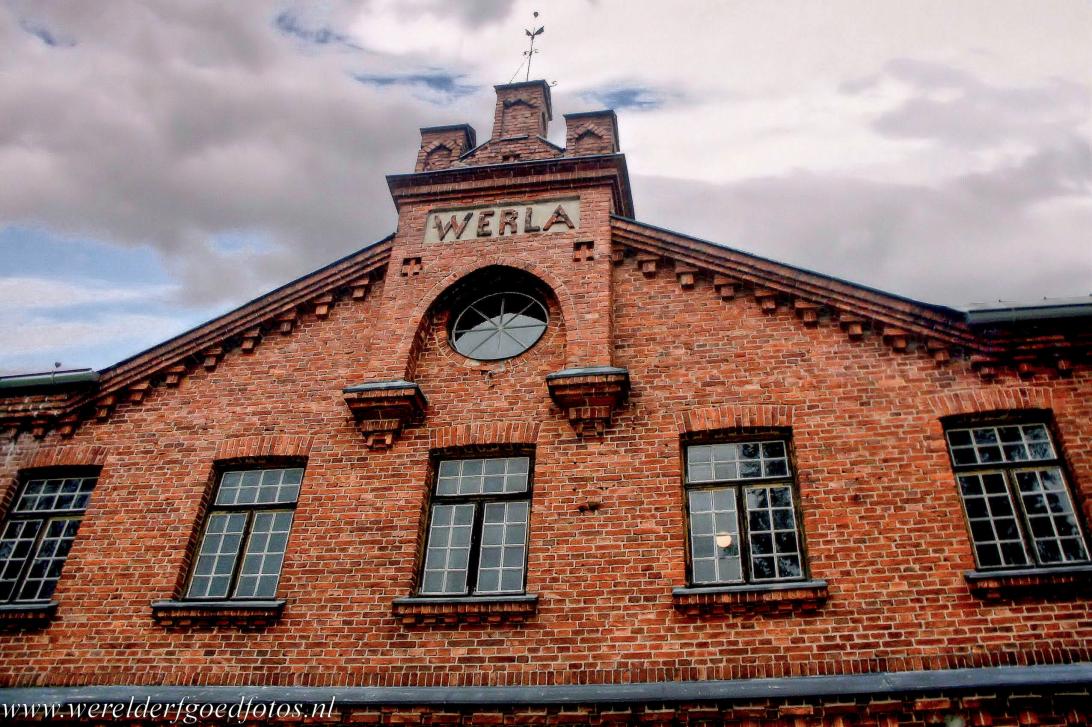
The Verla Groundwood and Board Mill is a unique part of the Finnish industrial history. Verla is a small mill dating from the early years of the wood processing industry in Finland. The mill is an outstanding and remarkable well preserved example of a rural board and paper mill in northern Europe. The Verla Groundwood and Board Mill was declared a UNESCO World Heritage in 1996.

The Verla Groundwood and Board Mill is a unique part of the Finnish industrial history. Verla is a small mill dating from the early years of the wood processing industry in Finland. The mill is an outstanding and remarkable well preserved example of a rural board and paper mill in northern Europe. The Verla Groundwood and Board Mill was declared a UNESCO World Heritage in 1996.
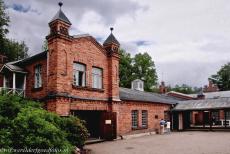
The Verla Groundwood and Board Mill was founded in 1872 by the Finnish civil engineer Hugo Neuman. After four years, the wooden buildings of the mill burned down, the new Verla Mill was also built from wood. After the drying loft was destroyed by a fire in 1892, the wooden buildings of the Verla Groundwood and Board Mill were replaced by the present red-brick buildings.
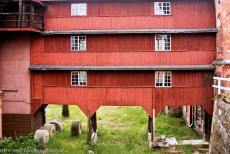
Verla Groundwood and Board Mill: The last remaining part of the first wooden buildings of the Verla Mill. Now, the Verla Groundwood and Board Mill is an industrial monument. The Verla Mill is located in the Kymi Valley in the southeastern part of Finland. Entry to the Verla Groundwood and Board Mill is by guided tours only. The tour last about one hour.

Verla Groundwood and Board Mill: A circular saw dating from the beginning of the 20th century. Spruce was the main raw material used for papermaking. The logs were first cut into blocks with the hand-operated circular saw. The wood blocks were converted into wood chips for the paper pulp, suitable for paper making. Since 1972, the Verla Mill is a factory museum.

Verla Groundwood and Board Mill: A paper press. The Verla employed about 160 workers, most of them were women, working as machine operators and packers. The Verla Mill closed down in 1964. Nothing has changed since then. The buildings and equipment of the Verla Groundwood and Board Mill have remained in their original condition.
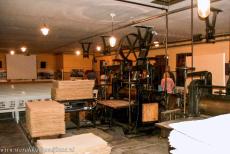
Verla Groundwood and Board Mill: All the historic machines were preserved. The main product of the Verla Mill was white pulp board, it was mainly used for book covers and boxes. The pulp board was exported to all over Europe, Russia and the United States. The Vera Mill was among the smallest groundwood and board mills in Finland, but had an excellent reputation.

The Verla Groundwood and Board Mill continued to operate until 1964. When the last workers reached the retiring age, the machines were switched off and the mill was closed. The machines of the Verla Mill were left intact and are more or less in running order. The Verla Groundwood and Board Mill produced about 150,000 tonnes of board throughout its existence.
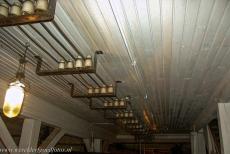
Verla Groundwood and Board Mill: The old electrical wiring and electrical insulators. The electric wiring of the Verla Mill dates back to the 1920s. Prehistoric rock paintings, estimated to be 7000 years old, are located near the parking area of Verla Mill. Verla Groundwood and Board Mill was inscribed on the UNESCO World Heritage List in 1996.
